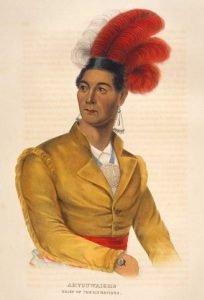Chasta Tribe. A tribe, probably Athapascan, residing on Siletz Reservation, Oregon, in 1867, with the Skoton and Umpqua, of which latter they were then said to have formed a part. The Chasta, Skoton, and Umpqua were distinct tribes which concluded a treaty Nov. 18, 1854. The Chasta were divided into the Kwilsieton and Nahelta, both residing on Rogue River. J. O. Dorsey thought these may have been identical with Kushetunne and Nakatkhetunne of the Tututunne. Kane, in 1859, located them near Umpqua River. In 1867 the Chasta, the Scoton, and the Umpqua together, at Siletz agency, numbered 49 males and … Read more

